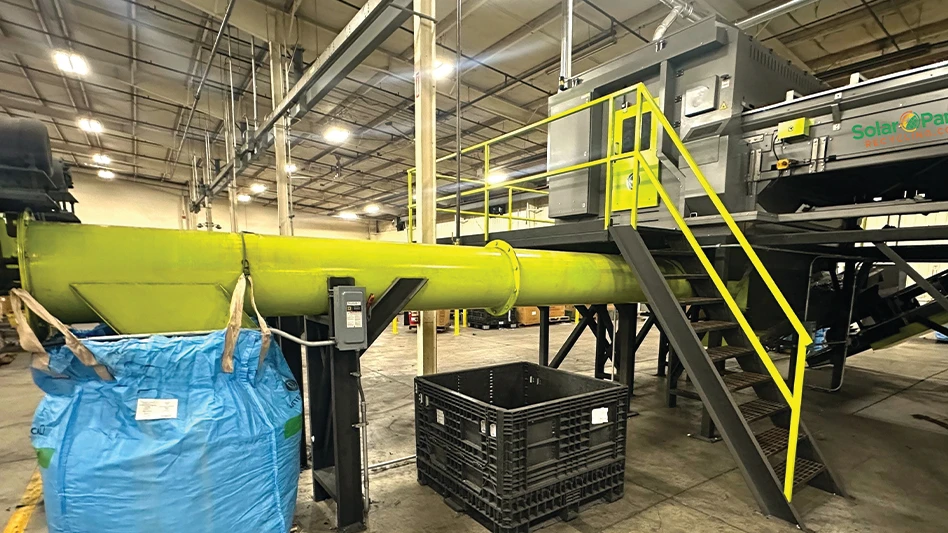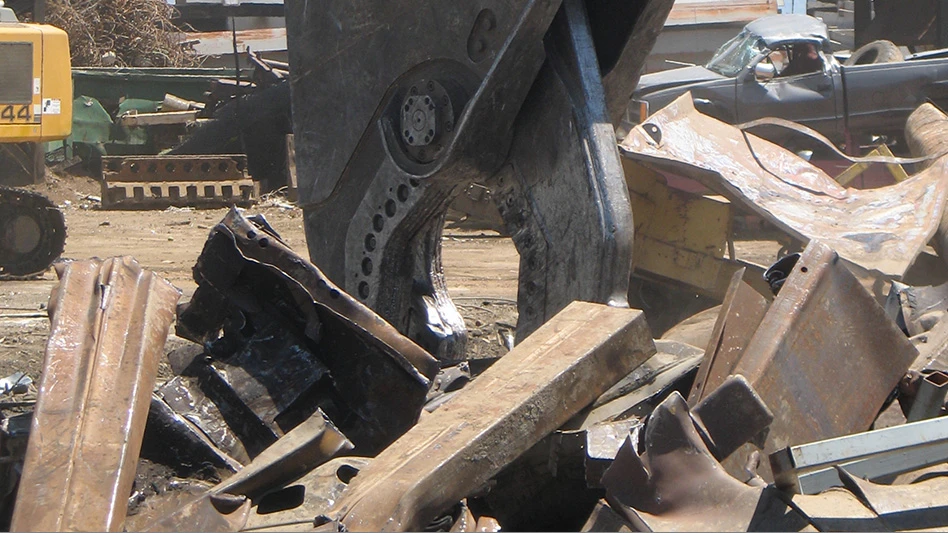
Ludmila | stock.adobe.com
Catalytic converters are the most complex nonferrous item in our industry. How to properly evaluate your returns and results can get confusing, especially when you are new to toll refining and assay. Most companies only look at their average price per unit, but this statistic can be extremely misleading. With that said, this article will give you a more in-depth explanation of all the important data points that should be tracked when selling using a toll refiner, which in turn will provide you with the confidence to review and interpret invoices from a toll refiner with ease.
Tallying things up
To begin, it all starts with your tally and having an accurate daily running count of your converters. Some recyclers in our industry re-sort and count an entire load before it ships out; however, this typically increases the chance of errors. Having an organized tracking and inventory system in place from the start will prevent counting errors from occurring. A sophisticated counting system also will allow for accurate evaluation of gross and net weights from a final invoice because a true physical converter count will be recorded for each load.
As a side note, every time you fill a box of converters, the gaylord should be securely wrapped and remain unopened until it gets to your buyers’ facility.
- It promotes a transparent business relationship.
- It provides you with a comparative report of your count and the processor’s count and how they match up from when you shipped the converters to when your processor received them.
At PMR, we like to call this statistic booking accuracy. As a rule of thumb, if a recycler is within plus-or-minus 2 percent, the company is counting their material accurately. Unfortunately, many companies are well above the 5 percent mark, which is too high. More importantly, when a company’s booking accuracy is truly reflective of its load, it is a great tool for not only hedging metals accurately but also for monitoring theft.
Next, we want to track the extras percentage. An extra is any converter type categorized outside of an original equipment manufacturer’s (OEM’s) ceramic converter, which includes aftermarket, foil and diesel converters. Most yards will have 10 percent to 20 percent extras per load on average. This is important to track because if hedging in advance, a potential overhedge can occur as converters categorized as extras will not generate many ounces (or any ounces at all if they are paid by the piece in light of insufficient weight requirements for assay).
The partial percentage—this represents how much loss on average a converter load might have—is the next data point to look at. Data show that a typical load will have 4 percent to 5 percent broken or partially full converters. If a recycler is less than 5 percent, this is a good indicator that material is being dismantled correctly and units are being managed with care. On the other hand, if the partial percentage is more than 5 percent, this could be the result of improper dismantling owing to aggressive pulling. If converters are mangled during dismantling and dust is being lost or flying out of the converter, a different method, tool or solution should be found to remove the converter from the vehicle.
A scrap yard buying from the public also should be cautious and validate that the material being purchased is not the result of dumping predominantly broken converters. Individual sellers might bring empty or half-full converters to a scrap yard and, when converter fullness isn’t verified, the converter could be purchased for more than it is worth because the purchase price assumes a full unit. To go even further, if you are a recycler purchasing converters from the public, exercise extreme caution when purchasing by serial number or code.
- restamping converter shells with high-value serial numbers and
- faking OEM units by either filling empty converters with aftermarket material or fabricating a brand-new converter shell/heatshield, such as one for a Honda O2 Premium or Hyundai, and placing a new aftermarket puck within it.
Converter count, booking accuracy, extras and partials percentages are data points that must be tracked and considered before a load is processed.
The next set of data points will focus on what to evaluate and analyze once assay results are available from toll refining.
Knowing your assay from your elbow
Let it be known that it is difficult to have absolute consistency with these evaluations because the mixture of a given load varies from one shipment to the next, which means that precious metals content also will vary.
Vehicle mileage, the region for which the converter was manufactured, converter wear and tear as well as different emissions standards influence converter value. Keep in mind that results from scrap yards will have a greater propensity to vary because material is being purchased from a multitude of sources, unlike auto recyclers that strictly are pulling converters from vehicles.
- Older converters generally will have higher platinum and lower palladium content.
- Late-model converters generally have very low platinum and extremely high palladium contents. Not all loads and yards are the same, so this is not an absolute, but it has been a predominate trend in the current market.
Every decade manufacturers will reconsider the composition of metals used in a converter in light of changing platinum, palladium and rhodium prices and scientific findings relating to the success and efficiency of each metal in reducing emissions. These changes only will be seen once vehicles reach end of life.
Next up is weight per converter, which is an exceptionally critical statistic that can be tracked only if your processor provides a complete grading report displaying full and partial units. An average converter contains about 2 pounds of honeycomb inside the shell. Therefore, if the weight per converter is higher than 2.3 pounds, this indicates that the converters are more likely to be older, heavier converters with lower PPM. If weight per can is under 1.8 pounds, that most likely indicates a composition of late-model units with very high PPM. A good grading report can provide greater insight on how results will turn out, or at least provide certain benchmarks. For example, if you had a low weight per converter (below 1.8 pounds) but your grading report shows 40 percent-plus of preunits, then the weight makes sense and there is no cause for alarm.
Outliers do happen in refining, but when tracking the right metrics, they can be explained easily from the information found in the grading and/or assay report.
Moving on, the next data point to review is returnable ounces. Ounces are generated from material’s processed weight and PPM, and tracking this metric will help a recycler decipher patterns. For instance, if a hedge is made upfront, specifically an estimate of 80 percent of total ounces, this can then be compared with the results when the assay is complete. In tracking this, a recycler can figure out if a good number of ounces is being hedged or if a constant overhedge is occurring and if the hedge percentage needs to be reduced over time. As a side note, if no assay history is available, a safe bet would be to aim for 60 percent to 80 percent of the national average when hedging material.
Once enough assay history has been accumulated, recyclers will have the ability to validate each of the above data points against a running average of past lots. Accumulating this information truly will give yards the ability to track their converter statistics and identify irregularities.
Outliers do happen in refining, but when tracking the right metrics, they can be explained easily from the information found in the grading and/or assay report. For example, if platinum PPM is exceptionally low on an assay report, but the palladium PPM is exceptionally high, this will indicate no cause for concern because these two metals usually work as opposites (under the assumption that a lot is not cherry-picked). The same would apply for weight per converter versus PPM for late-model vehicles; typically, the lower weight per converter, the higher the PPM.
Most converter buyers and processors only track a few statistics, such as average value per unit and PPM. However, to evaluate a load or a processor, many data points must be considered to derive a fair and accurate assessment and comparison.
At PMR, we help our suppliers not only in the proper tracking of all the data points mentioned previously but also in understanding what these statistics mean for them and for their businesses.
If you think the assay results of one of your converter loads is off, ask your buyer and processor to further explain its numbers for your load. If the company cannot give you a statistical explanation and justification, it might be time to find a buyer and processor that can. Start working with a catalytic converter processing partner that provides the answers and not more questions.
Ryan Carrafiello is director of corporate accounts at PMR Inc., Boisbriand, Quebec, and Chrysten Newton is the company's marketing director.
Latest from Recycling Today
- ExxonMobil sues California AG, environmental groups for defamation
- Argentina to allow scrap metal exports
- LME expresses satisfaction with its 2024 activity levels
- Institute urges increased focus on copper recycling
- Volvo CE dealership in Canada changes hands
- Takeuchi adds southwestern US manager
- McNeilus unveils fully integrated, electric front-loading collection vehicle
- CalRecycle releases SB 54 updates as new year begins





